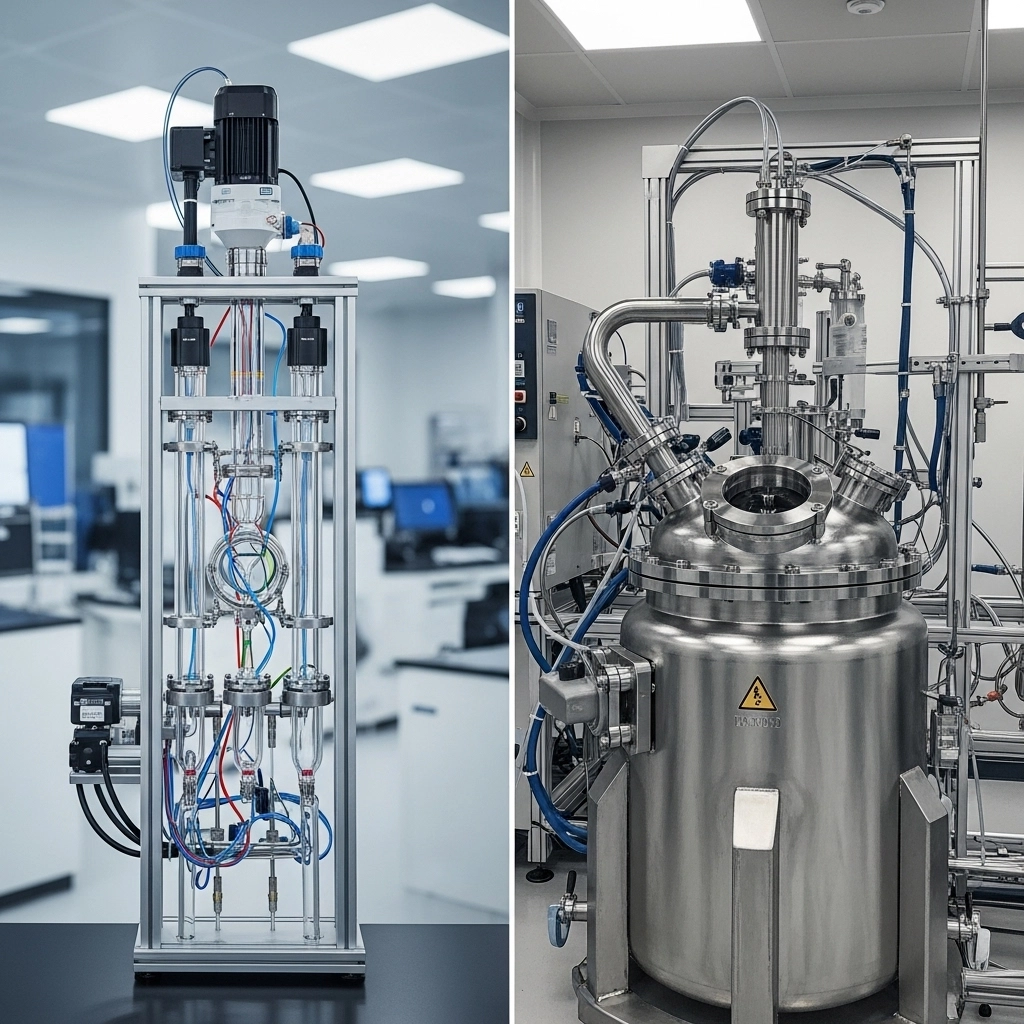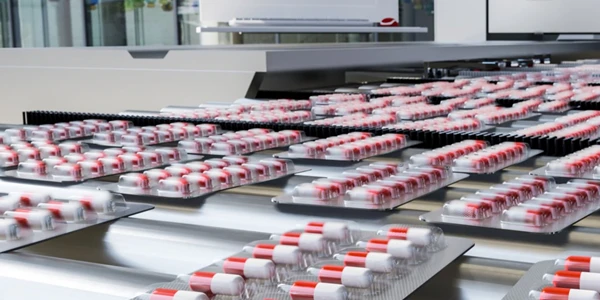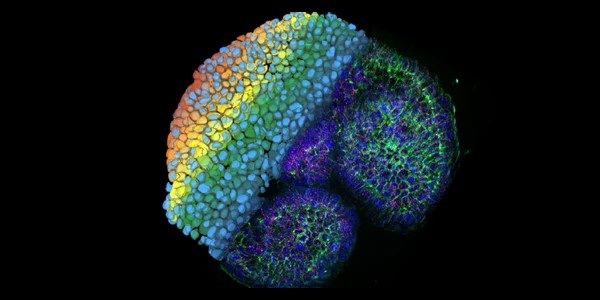Continuous Flow vs. Batch Processing: Optimizing Chemical Production for Pharmaceutical Success
ImageFX (2025) In the dynamic world of chemical and pharmaceutical manufacturing, selecting the optimal reactor system is paramount for efficiency, safety, and cost-effectiveness. The long-standing debate between continuous flow and traditional batch processing systems continues to evolve, with each offering distinct advantages tailored to specific production needs. Modern advancements have propelled continuous flow reactors into the spotlight for their ability to overcome conventional limitations, while batch reactors remain celebrated for their inherent versatility. This comprehensive guide delves into the nuances of both systems, highlighting their unique benefits and considerations, particularly within the demanding landscape of pharmaceutical drug development. Understanding these differences is key to making informed decisions that drive innovation and maximize your operational output. At the heart of any chemical process development, especially in pharmaceutical manufacturing, lies the relentless pursuit of cost efficiency. Every decision, from raw material selection to final product yield, directly impacts the bottom line. Three critical factors heavily influence the viability and ultimate success of a synthetic route: Material Costs: This encompasses the expenditure on raw materials, reagents, solvents, and all consumables. Minimizing these costs without compromising quality is a primary objective in selecting a synthesis pathway. Yield Optimization: Yield represents the quantity of desired product obtained from a chemical reaction. Maximizing yield is crucial, as it directly translates to more usable product from the same amount of input materials, thereby reducing waste and increasing profitability. Process development teams invest significant effort in optimizing reaction conditions to achieve the highest possible yield. Volume-Time Output (VTO): VTO is a critical metric reflecting reactor occupancy and overall process efficiency. A high VTO indicates that a reaction consumes excessive reactor hours or operates at a suboptimal volume, which can significantly hinder the entire process development cycle, regardless of material costs or yield. Efficient VTO ensures that valuable reactor time is utilized effectively, accelerating production timelines. Continuous flow processing technologies have emerged as a transformative solution, directly addressing many inherent challenges associated with conventional batch reactors. Traditional batch methods often involve extensive scouting of parameters like time, temperature, and reactant order. Scaling up batch processes typically means employing larger vessels, which can introduce new efficiency issues, complicate optimization, and lead to reduced yields, higher VTO, and increased costs. Significant strides have been made in continuous flow reactor development, particularly for small-scale chemical synthesis, and the technology is rapidly gaining traction in pharmaceutical drug development. While practical challenges exist, the compelling cost benefits often outweigh them. Continuous flow approaches frequently offer substantial advantages over batch processing in several key areas: Enhanced Safety: Smaller reaction volumes at any given time reduce the risk associated with exothermic reactions or hazardous materials. Superior Quality Control: Precise control over reaction conditions allows for tighter product specifications and more consistent quality. Increased Throughput: Continuous operation enables higher production volumes over time, leading to faster manufacturing cycles. Reduced Material Consumption: Optimized reaction conditions and efficient mixing often lead to less waste and more effective use of raw materials. Rapid Reaction Screening: The ability to quickly adjust and test various reaction conditions accelerates process development. Scalable Methodology: Reaction designs are inherently scalable, simplifying the transition from lab to production. Efficient Resource Usage: Continuous systems often require less physical space and energy compared to large batch setups. Improved Product Stability: Consistent reaction environments can lead to more stable final products. Explore our full guide on advanced chemical processing techniques to learn more about optimizing your production. Despite the rise of continuous flow, versatility remains a dominant and highly valued attribute of traditional batch reactor systems. A universal batch setup, characterized by its relatively basic configuration, allows for a wide array of operations to be conducted without the need for breaking containment or requiring individual reactor redesigns. This flexibility is particularly invaluable for processes involving caustic or toxic reactants, or high-potency products, where any breach of containment would result in significant time and resource losses. The robust containment vessel of a batch reactor is adaptable, accommodating various agitation and heating/cooling mechanisms perfectly suited to specific reaction processes. Parameters such as vessel shape, agitator speed, and baffle arrangement can be precisely specified. Alternative agitation techniques, like ultrasonic mixing, can also be readily integrated. Heating and cooling systems are crucial for controlling the thermal properties of chemical reactions, and batch reactors can utilize a single external jacket, half-coil jacket, or constant flux jacket, depending on the process requirements. Beyond their inherent versatility, batch reactor systems offer several compelling advantages: Simplicity in Design: They feature a relatively basic design, making them easier to fabricate and modify. Widespread Application: Batch reactors are extensively used across diverse industries, from food and beverage to pharmaceutical manufacturing and small-scale research fermentation processes. Ease of Scaling: An optimized batch process can be scaled with relative ease by simply increasing the size or number of reaction vessels. Reduced Redesign Needs: They minimize the need for extensive reaction cell redesign and fabrication iterations during method optimization, saving time and resources. Ultimately, the decision between continuous flow and batch systems often hinges on the specific reaction process(es) at hand and the demand for high-throughput production and reliability. While continuous flow systems excel in these areas, batch reaction vessels may prove more advantageous for well-defined processes, potentially saving considerable upfront costs in reactor design and fabrication. Important considerations also include existing infrastructure, maintenance capabilities, staff expertise, and operational workflows. Ready to optimize your chemical and pharmaceutical production processes? Explore a wide range of cutting-edge Process Equipment listings on LabX today! What are the primary differences between continuous flow and batch reactors?
Continuous flow reactors operate by continuously feeding reactants into a system and drawing products out, offering steady-state operation and precise control. Batch reactors, conversely, process a fixed amount of material in a closed vessel, allowing for greater versatility in handling different reactions sequentially. Which reactor system is more cost-effective for pharmaceutical manufacturing?
The cost-effectiveness depends on the specific application. Continuous flow systems often offer long-term cost savings through higher throughput, reduced material consumption, and improved safety. However, batch systems can have lower upfront design and fabrication costs, making them suitable for smaller-scale or highly varied production. How do these systems impact product quality and safety?
Continuous flow systems generally provide enhanced safety due to smaller reaction volumes and allow for tighter quality control through precise, consistent reaction conditions. Batch systems, while versatile, may require more rigorous safety protocols for larger volumes and can experience more variability in product quality if conditions are not meticulously controlled throughout the batch. When should a company consider switching from batch to continuous flow processing?
Companies should consider transitioning to continuous flow processing when seeking to increase throughput, improve reaction safety for hazardous processes, achieve higher product consistency, or reduce their manufacturing footprint. It's particularly beneficial for high-volume, well-established reactions.

Understanding Core Process Chemistry Drivers
Advantages of Continuous Flow Reactor Systems
Exploring the Versatility of Batch Reactor Systems
Final Thoughts on Reactor System Selection
Frequently Asked Questions










